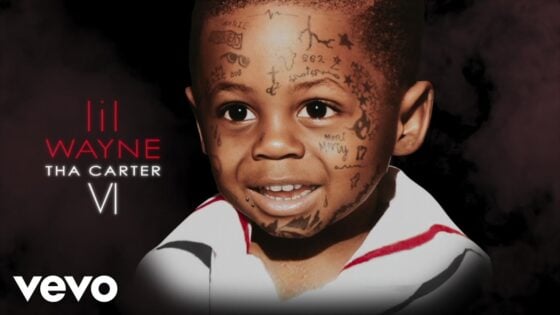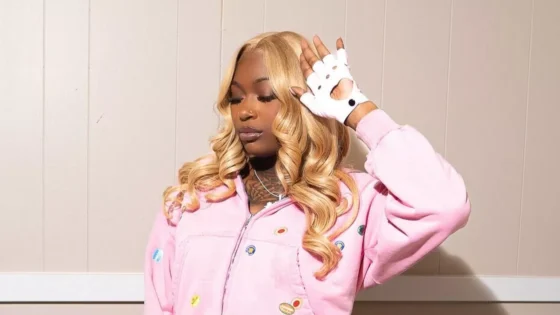A Tendency to Overdress
Lady Gaga has long been known for embracing fashion that is both striking and theatrical, yet this flair for spectacle has historically prompted her to overdress her art. From the earliest days of her career, she has been unwavering in her commitment to weaving each era around a grand concept, pushing the boundaries of what those themes signify. This approach often involves amplifying their importance to dramatic heights, and sometimes going well beyond what might be needed to simply convey her core message. Every time a new project comes out she has specifically picked visuals, wardrobe choices, and storylines that will be of the same theme throughout them and will make sure that her fans are always satisfied with the things she does artistically.
People who have experienced Lady Gaga’s artistic path are cognizant that she goes above and beyond when she can, rather than limiting her simple act to the naked eye. At times, her means of implementation have resulted in combinations of her music and her messages like in the example of “Born This Way.” That particular album showcased both political activism and messages of self-love, transforming it into a compelling statement that transcended typical pop music. Similarly, the narrative of healing woven into “Chromatica” underscored the emotional growth Gaga wanted to share with her listeners, allowing the album’s theme to resonate deeply. Although critics and fans alike have applauded these instances of polished vision, there have also been moments when her intent did not align as smoothly with the end product.
Stepping Back on “Mayhem”
Occasionally, Lady Gaga’s desire to shape each era as a grand statement has resulted in unintentional stumbling blocks. Last year’s “Harlequin,” for example, served as a striking illustration of how indulging every artistic impulse can overshadow the core focus of an album. Even though many found “Harlequin” visually arresting and entertaining, its conceptual direction felt excessively improvised. A similar criticism fell upon “Artpop,” which attempted to inject significance into areas that, ultimately, lacked the depth to support such weighty ideas. Fans may still find plenty to love in both records, but they also stand out as instances when Gaga’s boundless creativity got in her own way, momentarily diluting her intended vision.

These past oversights highlight why Gaga’s strategy for “Mayhem,” her seventh album, has been so noteworthy. Contrary to her usual method of intensive world-building, she refrained from mythologizing the record or its accompanying music before it was released. Reflecting on this choice during a discussion with Apple Music, she revealed, “I actually made the effort [while] making ‘Mayhem’ to not do that and not try to give my music an outfit.” By resisting the urge to attach an elaborate narrative or complex costume design to her latest body of work, she opened the door for a more honest style of music-making. This decision stands as a departure from the kind of promotional hype fans have grown to expect from her previous albums, yet it offers a fresh perspective on how she can present new material without feeling compelled to wrap it in countless layers of visual symbolism.
Returning to Simplicity
On “Mayhem,” she appears to channel the same purity that characterized “The Fame,” her 2008 breakout album known for fusing the glossy veneer of pop music with deeper questions about stardom. That earlier project toyed with the idea of artifice in pop culture while simultaneously celebrating its irresistible hooks. By recalling that simpler approach, Gaga has captured a similar energy, stripping away layers of extraneous adornments and focusing on her innate ability to craft infectious dance tracks. The result suggests an artist reconnecting with her original spark, reawakening the sense of excitement she displayed when she first entered the scene.
Fans of Lady Gaga’s dance-heavy repertoire will instantly recognize the spirit that she brings to “Mayhem.” This album effectively showcases her liberated side, free from the burdensome expectations she sometimes places on her own projects. It seems the pretentiousness that detracts from her work is taking a vacation in this piece, giving her the chance to be her best like her most memorable songs. By focusing on the simple joy of the dance floor, she ensures that the tracks remain exciting and they become a way to bond and connect around music, making one think of her outstanding talent to mix pop aesthetics with artistic intention.
The Pull of Familiarity
A return-to-form album often flourishes by leveraging nostalgia. Artists count on day-one supporters still chasing the exhilaration they first felt during a breakout moment, trusting that familiar sights and sounds will capture that spark yet again. However, this method can become treacherous if it drifts too deep into the past. In the last year, both Justin Timberlake and Katy Perry tried returning to the well-worn tropes that made them stars.
In contrast, Lady Gaga discovers a balanced way to resurrect the vibe of her early work on “Mayhem” without letting any single throwback eclipse the album’s modern spirit. While there are definite winks at her former glory—“Don’t Call Tonight,” for example, feels like the spiritual descendant of “Alejandro”—the overall project remains in sync with today’s pop sensibilities. Crucially, she avoids chasing every fleeting trend, and instead concentrates on the core qualities that made her an enduring cultural force.
Lady Gaga signaled her intent for unburdened, high-energy pop with her earlier track “Abracadabra,” promising listeners an experience that was as impactful as it was carefree. On “Mayhem,” she masterfully delivers on that ambition, steering clear of unnecessary self-importance. This confident energy emerges most vividly in the songs closely tied to the signature style she pioneered with RedOne on “The Fame” and “The Fame Monster.” One standout, “Garden of Eden,” showcases an irresistibly snappy sweetness that links it seamlessly with that earlier sonic identity. Some of her most loyal fans theorize that “Garden of Eden” may even be a reimagined version of “Private Audition,” a Darkchild-produced track from that era, reinforcing just how deliberately Gaga is weaving her past into her present.
Echoes of Previous Eras
Throughout “Mayhem,” Lady Gaga nods to the sights and sounds of her own past while embracing artistic influences that have shaped her from the beginning. “Shadow of a Man” saunters with the effortless confidence of wearing sunglasses in the dark. Meanwhile, “Vanish Into You” bears a sly David Bowie essence, building tension before exploding into a chorus that calls to mind the powerful buildup of “Bad Romance.” These moments highlight Gaga’s ability to salute her roots without becoming trapped in them. By revisiting past points of inspiration, she underscores her evolution, proving she can honor familiar territory while taking meaningful steps forward.
On top of these musical callbacks, “Mayhem” revisits subject matter that Lady Gaga has explored since her earliest days. She once again teeters precariously on towering heels in “Garden of Eden,” painting a vivid picture of her bold persona. She keeps teetering dangerously on towering heels as she does in “Garden of Eden,” thereby properly illustrating her daring persona. Now she is looking at the downside of fame in “Perfect Celebrity”, agreeing with the line from “Paparazzi” that has similar advice. Therefore, through “Mayhem,” she motivates an upward movement in the plot of her works without getting stuck in its middle. Instead of feeling rehashed, these ideas reflect her ongoing fascination with the intersection of glamour and its hidden costs. Consequently, she creates an album that simultaneously speaks to fans’ nostalgia and propels her artistry in refreshing, dynamic directions.
The Collaborative Powerhouse Behind “Mayhem”
Lady Gaga took the reins for “Mayhem,” serving as executive producer in collaboration with her fiancé Michael Polansky and Andrew Watt. In the past, Watt worked with Miley Cyrus and later started to be recognized as a classic rock promoter/rescuer for Elton John, the Rolling Stones, and Paul McCartney among others. Together they oversaw Gaga’s direction over 14 tracks by fusing her signature style with the production expertise courtesy of Cirkut and Gesaffelstein who always try on limitless trends in their respective genres. Throughout “Mayhem,” the production team’s meticulous input results in songs that never feel overcomplicated. Instead, they carry an appealing sense of variety, showcasing a range of influences from funk to edgy grunge to the type of breezy synth-pop often associated with Jack Antonoff’s style.

By tapping into the resources and distinct skill sets of Watt, Cirkut, and Gesaffelstein, Lady Gaga ensures that “Mayhem” reflects the intense energy its title implies. Every producer brings themselves in a new way, and makes the album adapt to different music worlds, while keeping the common thread of the concept. The method that Gesaffelstein put into practice with the song “Killah” gives the industrial flavor that Nine Inch Nails made with their song “Closer.” Along with this, “Zombieboy” is characterized by the use of Chic melodies, which create a disco atmosphere and remind of the 70s. That same spirit of borrowing from pop’s historical sounds appears again on “How Bad Do U Want Me,” which seems clearly shaped by the mold of Taylor Swift’s “Blank Space.” Gaga doesn’t conceal these references, freely admitting that they help craft a textured, dynamic listening experience.
Influences on Display
Despite a spectrum of nods to other artists, “Mayhem” still sounds entirely like Lady Gaga, as only her work can. She continues to embrace the larger-than-life style that has endeared her to fans for more than a decade, even though she also displays moments of self-indulgence. In true Gaga fashion, several songs lean into the dramatic flair that has colored her entire catalog. The closing stretch of “Mayhem” highlights this tendency, climaxing in “Die With a Smile”—a duet with Bruno Mars that marks the last in a trio of songs brimming with theatrical ballad energy. “Blade of Grass,” which appears just before “Smile,” even includes a bold key change to emphasize its passionate mood. With that one-two punch of showmanship, Gaga makes it clear that she isn’t willing to fully abandon her love of the grandiose.
Although “Die With a Smile” became her biggest hit in several years, it gained attention as a lounge-style track that many perceived as a safer choice. It hinted that audiences might be craving a more subdued version of Gaga. Yet, “Mayhem” mostly avoids that conservative path. Instead, the album confidently stakes out a zone where Gaga is unafraid to revisit her earlier influences while remaining open to new ideas. The mix of funky grooves, dark textures, and airy pop signals that she is eager to keep surprising listeners. Even her lyrics circle back to familiar themes, from introspective musings on fame to nods at her inescapably high heels. In doing so, Gaga preserves a signature spirit that draws longtime supporters close, reminding them why they fell for her creative boldness in the first place.
A Triumphant Return
All of these elements converge in “Mayhem,” ultimately serving as a refreshing reset for Lady Gaga. The album never feels bogged down by the weight of overthinking or elaborate conceptual frameworks. Instead, Gaga’s voice projects an air of confidence and freedom from the usual pressures that both she and her fan base often impose.


































